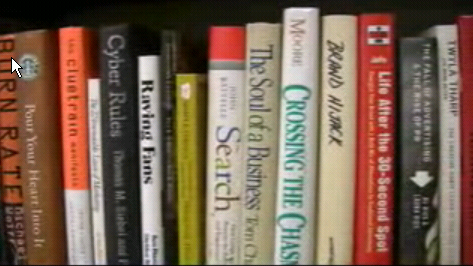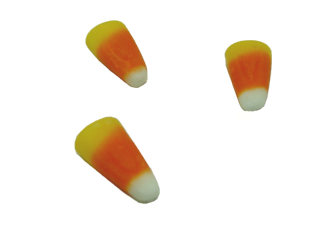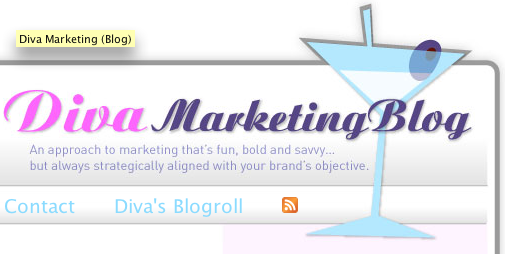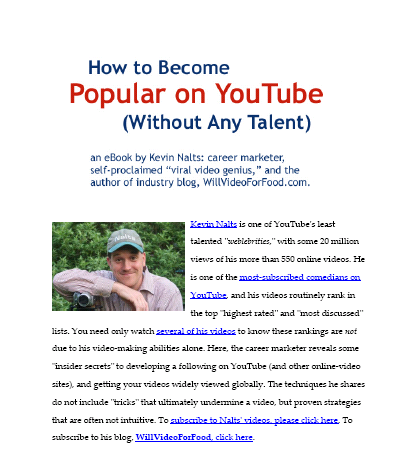Balding white marketer desperately wants to meet smart, strategic media buyer. If you’re one, please recognize you’re not the target of this rant. But the rest of you are just so friggin’ short sighted and clueless.
There are some amazing online-video series that could be incredible opportunities for smart brands wanting to engage with early adopters of a medium that is changing the way we relate to content and brands.
Brands can reach depth and relevancy with their target, even if it’s not driving total significant awareness and immediately creating ROI through driving intent, store visits, and trial.
I give you exhibit one. iChannel. A mere 8000 people are subscribed to this series on YouTube, but the views of the weekly series are roughly three times that (I’m the inverse of that with 30,000 Nalts subscribers, but some recent videos ranging in the 8-15K views). So it’s a healthy and highly devoted and interactive audience. Episode 31 had 180K views alone.
And it’s deeply philosophical, well acted, intelligently scripted and short and addictive. I had the pleasure of appearing in one last May.
These guys spend more time setting up one shot than I do on my entire post production. The audience is like a microcosm of those watching Lost. Or The Office. They’re engaged, passionate, and hold their breath waiting for the next episode.
So why would a media buyer pass on this?
- It’s not a big media deal. No hot AOL ad reps are pushing it.
- The audience isn’t big enough. No scale yet.
- The conversion from the episode to a bloated brand microsite wouldn’t be great.
- They can just advertise on YouTube’s invideo ads and get there.
Why should an electronic manufacturer dye to have sole sponsorship?
- They could probably own it for the equivalent of pocket change they dug from the back of their marketing budget couch.
- It would be ground breaking.
- The audience is perfect, and the level of product engagement would be far richer than an ad we’re trained to ignore.
- It sets the stage for a new model where advertisers contract directly with creators of content (who carry fixed audiences). No worthless intermediaries clogging the pipes between.
What’s the solution to grabbing these types of opportunities? Have these deals championed by someone outside the regular media-buying job. While I was at Johnson & Johnson, the big deals between media players (networks and magazines) were done by folks that weren’t inline marketers like me, but had influence over the way media budgets were set across the many brands. After all, J&J couldn’t get interesting deals if each brand fended for itself, and the interesting partnerships required someone that could step outside the short-sighted world I live in when charged with P&L of a brand.









